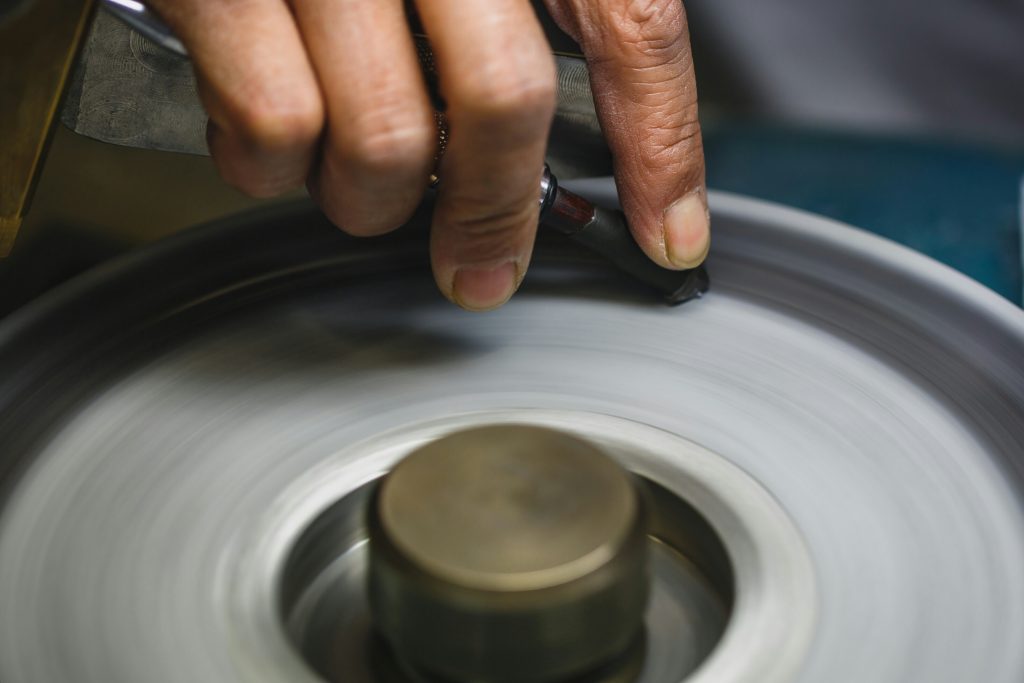Since the dawn of time, Mankind has polished and cut gemstones to adorn its jewellery.
Tutankhamun’s burial mask testifies to it, with its calibrated Lapis-Lazuli, Turquoise and Carnelian, in rectangular and trapezoid shapes. The Lapidary equipment was then very rudimentary.
It was probably consisting of a wooden disc covered with a dried buffalo hide coated with abrasive powder. Over centuries, this reel formerly operated by foot evolved into a more sophisticated workbench, very accurately described by Chriten. Diderot mentioned his drawing in the Encyclopedia he published 1751.

